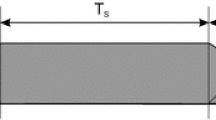Abstract
Growing emphasis on multimedia traffic has underlined the importance of broadband asynchronous transfer mode (ATM) networks which are capable of supporting demanding applications such as audio/video playback, image browsing, real-time voice/video transmission and interactive data exchange in a unified manner. However, the extension of ATM from wireline to wireless creates a new set of challenging issues. ATM standards are developed based on high data rates and reliable transmission links. This is in contrast to wireless channels where bandwidth is limited and error rates are high. Furthermore, existing ATM specifications are designed primarily to provide services to fixed end-terminals with little ability to adapt to mobile connections and the highly time-varying conditions associated with wireless networks. This paper surveys the major technical and service issues related to the deployment of ATM in third-generation wireless networks. It will also cover how international standards are progressing in this important area.
Similar content being viewed by others
eferences
S. Agnelli and P. Mosca, Transmission of framed ATM cell streams over satellite: A field experiment, in: IEEE Internat. Conf. on Communications (June 1995) pp. 1567-1571.
B. Bing, On the stability of the randomized slotted ALOHA protocol, in: Proc. of the IEEE Internat. Symposium on Information Theory, Massachusetts Institute of Technology, Cambridge, USA (August 1998) p. 223.
B. Bing and R. Subramanian, Enhanced reserved polling multiaccess technique for multimedia personal communication systems, to appear in Wireless Networks.
Broadband via satellite, IEEE Communications Magazine 35(7) (1997).
D. Chitre et al., Asynchronous Transfer Mode (ATM) operation via satellite: Issues, challenges and resolutions, International Journal of Satellite Communications 12 (February 1994) 211-221.
http://www.teledesic.com.
http://www.telesat.ca.
http://www.tik.ee.ethz.ch/~wand.
http://www.cselt.it/sonah/AWACS.
Introduction to mobile and wireless ATM, IEEE Communications Magazine 35(11) (1997).
T. Kwok, ATM: A New Paradigm for Internet, Intranet and Broadband Services and Applications (Prentice-Hall, Englewood Cliffs, NJ, 1998).
N. Morinaga et al., New concepts and technologies for achieving highly reliable and high capacity multimedia wireless communications systems, IEEE Communications Magazine 35(1) (1997) 34-40.
P. Pancha and M. Zarki, Bandwidth requirements of variable bit rate MPEG sources in ATM networks, in: Proc. of the IEEE INFOCOM (1993) pp. 902-909.
M. Shafi et al., Wireless communications in the twenty first century: A perspective, Proceedings of the IEEE 85(10) (1997) 1622-1638.
M. Toy, ATM Development and Applications (IEEE Press, New York, 1996).
Wireless ATM, IEEE Personal Communications Magazine 3(4) (1996).
Wireless ATM, IEEE Journal on Selected Areas in Communications 15(1) (1997).
Author information
Authors and Affiliations
Rights and permissions
About this article
Cite this article
Bing, B. A survey on wireless ATM technologies and standardization. Telecommunication Systems 11, 205–222 (1999). https://doi.org/10.1023/A:1019149418631
Issue Date:
DOI: https://doi.org/10.1023/A:1019149418631




